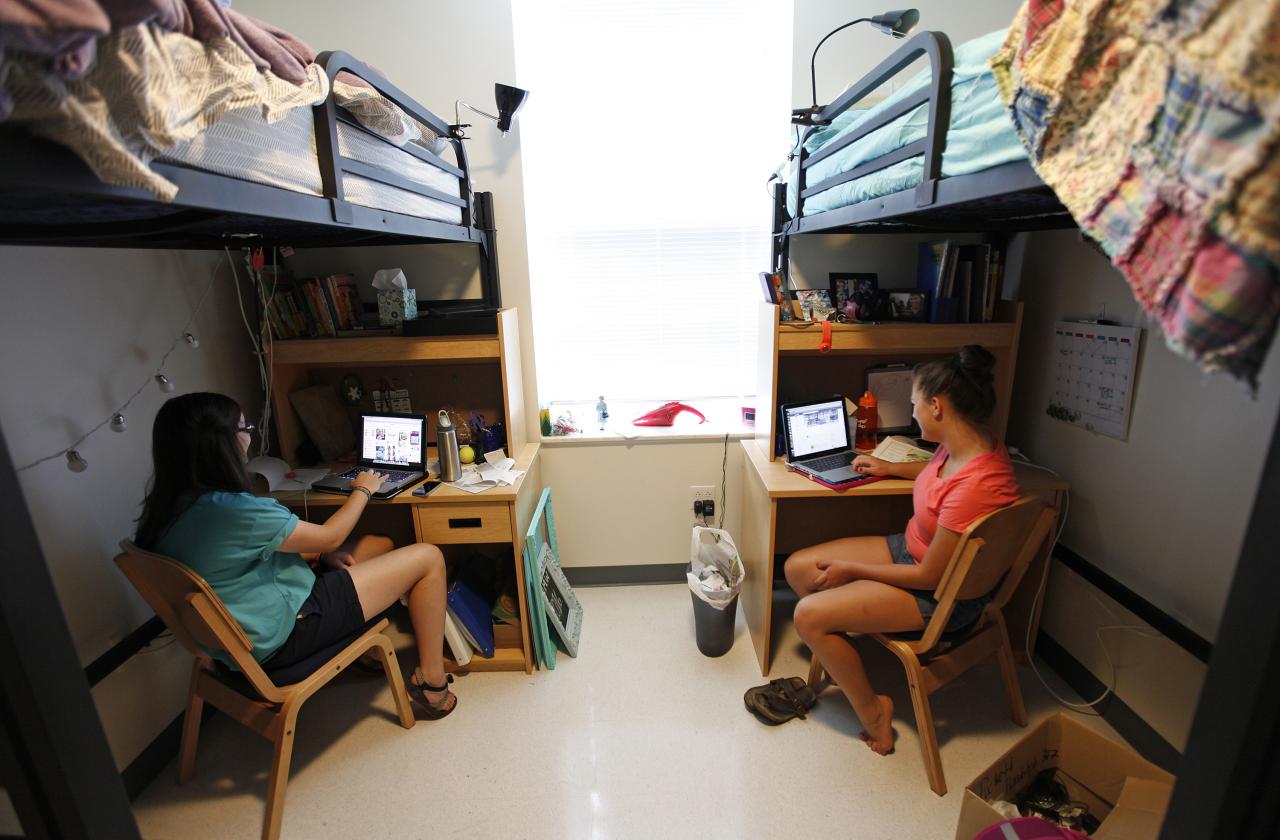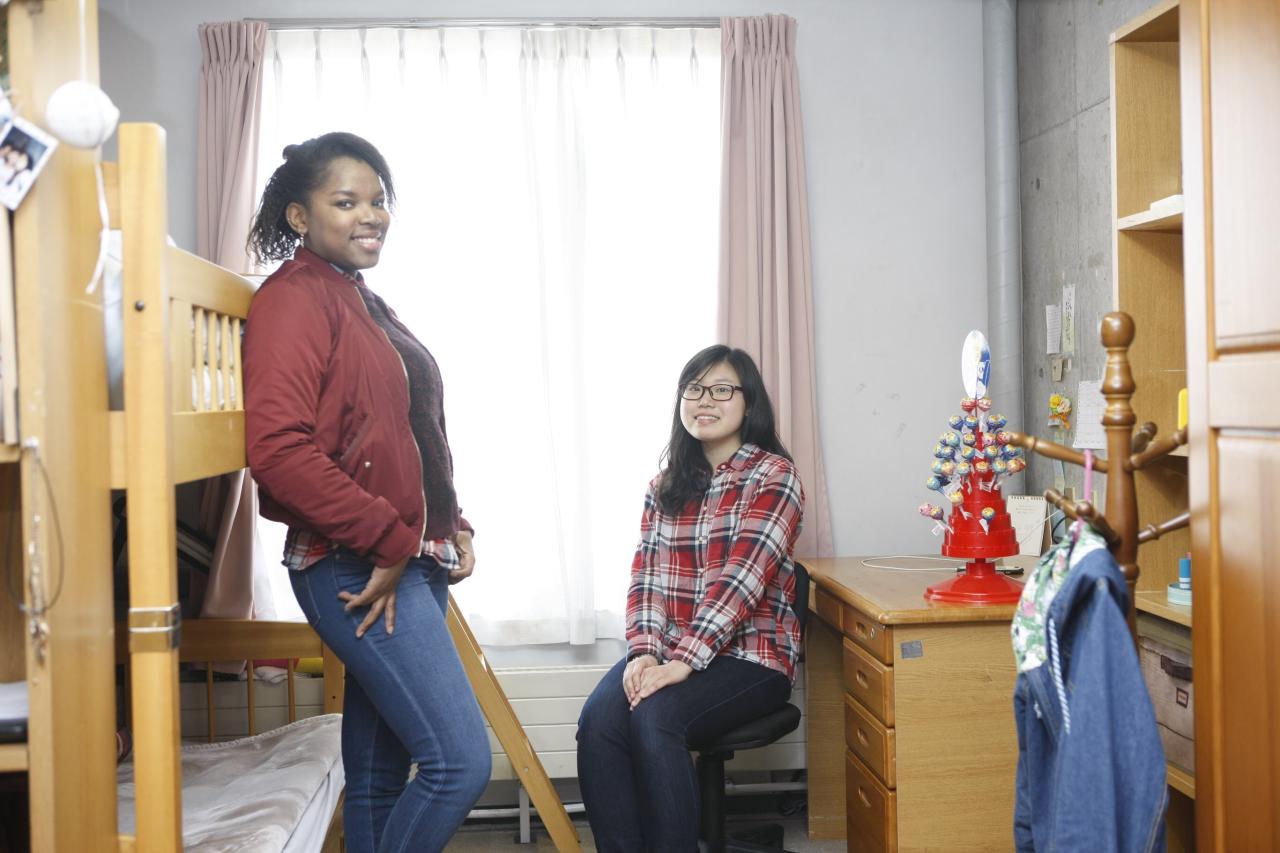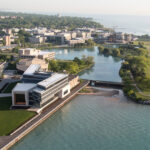University dormitory news often focuses on the multifaceted experience of campus living. This guide delves into the daily routines, social dynamics, amenities, safety protocols, financial aspects, rules, technology, maintenance, sustainability efforts, conflict resolution, and design possibilities within university dormitories. It aims to provide a comprehensive overview for prospective and current residents, offering insights into both the challenges and rewards of this unique living arrangement.
From navigating the social landscape and maximizing limited space to understanding safety procedures and budgeting effectively, this resource covers a wide range of topics crucial to a successful and enriching dorm experience. We explore the evolving role of technology in modern dorms, the importance of sustainable practices, and effective strategies for conflict resolution. Ultimately, this guide aims to equip students with the knowledge and resources they need to thrive in their university dormitory.
Dorm Room Technology and Connectivity

Modern university dormitories typically offer a range of technological amenities designed to support students’ academic and social lives. This includes robust wired and wireless internet access, often provided through a dedicated network infrastructure managed by the university’s IT department. Many rooms also feature data ports for wired connections, offering potentially more stable and faster internet speeds compared to Wi-Fi. Beyond internet access, common technological features might include cable television connections, individual phone lines (though less common now), and potentially access to shared printers or computer labs within the dormitory complex.
Dorm internet access, while generally available, can present several challenges for students. Network congestion, particularly during peak hours (evenings and weekends), is a frequent issue, leading to slower download and upload speeds. The shared nature of the network means that the overall performance can be significantly impacted by the usage patterns of other residents on the same network. Furthermore, the quality of the Wi-Fi signal can vary significantly depending on the location within the dorm room and the presence of physical obstructions, like thick walls or furniture. Finally, security concerns, such as unauthorized access or data breaches, are a potential risk, particularly if students fail to utilize strong passwords and secure network settings.
Internet Speed and Reliability Optimization Strategies, University dormitory news
Maximizing internet speed and reliability in a dorm room requires a multi-faceted approach. Students should first consider utilizing a wired connection whenever possible, as wired connections generally provide more stable and faster speeds than Wi-Fi. If a wired connection isn’t feasible, optimizing the placement of the Wi-Fi router within the room and minimizing interference from other electronic devices can significantly improve signal strength. This includes avoiding placing the router near metal objects or other electronic devices that might interfere with the signal. Regularly restarting the router can also help to clear temporary glitches and improve performance. Finally, limiting the number of devices connected to the network simultaneously and choosing a time of day to use the internet when network congestion is less severe can also contribute to a more reliable and faster internet experience. For example, downloading large files late at night or early in the morning might yield better results than trying to do so during peak hours.
Dorm Room Sustainability Initiatives: University Dormitory News

University dormitories are increasingly adopting environmental sustainability initiatives to minimize their ecological footprint and promote responsible resource management. These initiatives not only benefit the environment but also educate students about sustainable practices, fostering a culture of environmental consciousness that extends beyond their campus life. Many universities are actively integrating green practices into their dorm operations, providing students with opportunities to participate in and learn from these efforts.
Universities are implementing a range of strategies to make dorms more eco-friendly. This includes using energy-efficient lighting and appliances, installing smart thermostats to optimize heating and cooling, and implementing water-saving fixtures in bathrooms and kitchens. Recycling programs are often enhanced, with clear signage and convenient recycling bins placed throughout the buildings. Some universities even utilize renewable energy sources, such as solar panels, to power their dorms, reducing their reliance on fossil fuels.
Eco-Friendly Practices for Students
Students can significantly contribute to a more sustainable dorm environment through simple yet impactful changes in their daily routines. Adopting these practices not only reduces their individual environmental impact but also creates a more environmentally conscious community within the dormitory.
Simple actions like turning off lights and electronics when leaving the room, using reusable water bottles and coffee cups, and opting for shorter showers can collectively make a big difference. Recycling diligently and properly sorting waste is crucial. Choosing to purchase sustainable products, such as eco-friendly cleaning supplies, can also reduce the overall environmental impact. Furthermore, minimizing food waste by planning meals carefully and storing leftovers appropriately contributes to sustainability efforts.
Poster Promoting Sustainable Living
Imagine a poster with a vibrant green background featuring stylized images of leaves and a clear blue sky. The main heading, “Live Green, Live Sustainably,” is written in bold, friendly lettering. Below the heading, a concise list of actionable steps is presented with accompanying icons. For example, a lightbulb icon next to “Switch to LED lighting,” a water drop icon next to “Take shorter showers,” and a recycling symbol next to “Recycle properly.” The poster could also include a QR code linking to online resources offering further information on sustainable dorm living. The bottom of the poster might include the university logo and the tagline: “Small changes, big impact.” This visually appealing and informative poster would serve as a constant reminder of the importance of sustainable practices within the dormitory environment.
Living in a university dormitory is a transformative experience, shaping social skills, independence, and resourcefulness. While challenges are inevitable, understanding the dynamics of dorm life, from budgeting and safety to community building and conflict resolution, empowers students to navigate this phase successfully. This guide serves as a valuable resource, offering practical advice and insights to ensure a positive and enriching dormitory experience, ultimately contributing to a fulfilling university journey.
University dormitory news often covers a range of topics, from renovations and room assignments to community events and resident concerns. For instance, recent updates on campus housing policies might be influenced by broader institutional decisions, such as those you can find in the current liberty university news regarding student life. This in turn can impact the overall dormitory experience and the services provided to residents.
Recent university dormitory news highlights the increasing demand for on-campus housing, a factor often influenced by a university’s overall reputation. This demand is often correlated with rankings like those published by the u.s. news & world report university rankings , as higher-ranked institutions tend to attract more applicants. Consequently, the university is exploring options to expand dormitory capacity to meet the growing student population.




